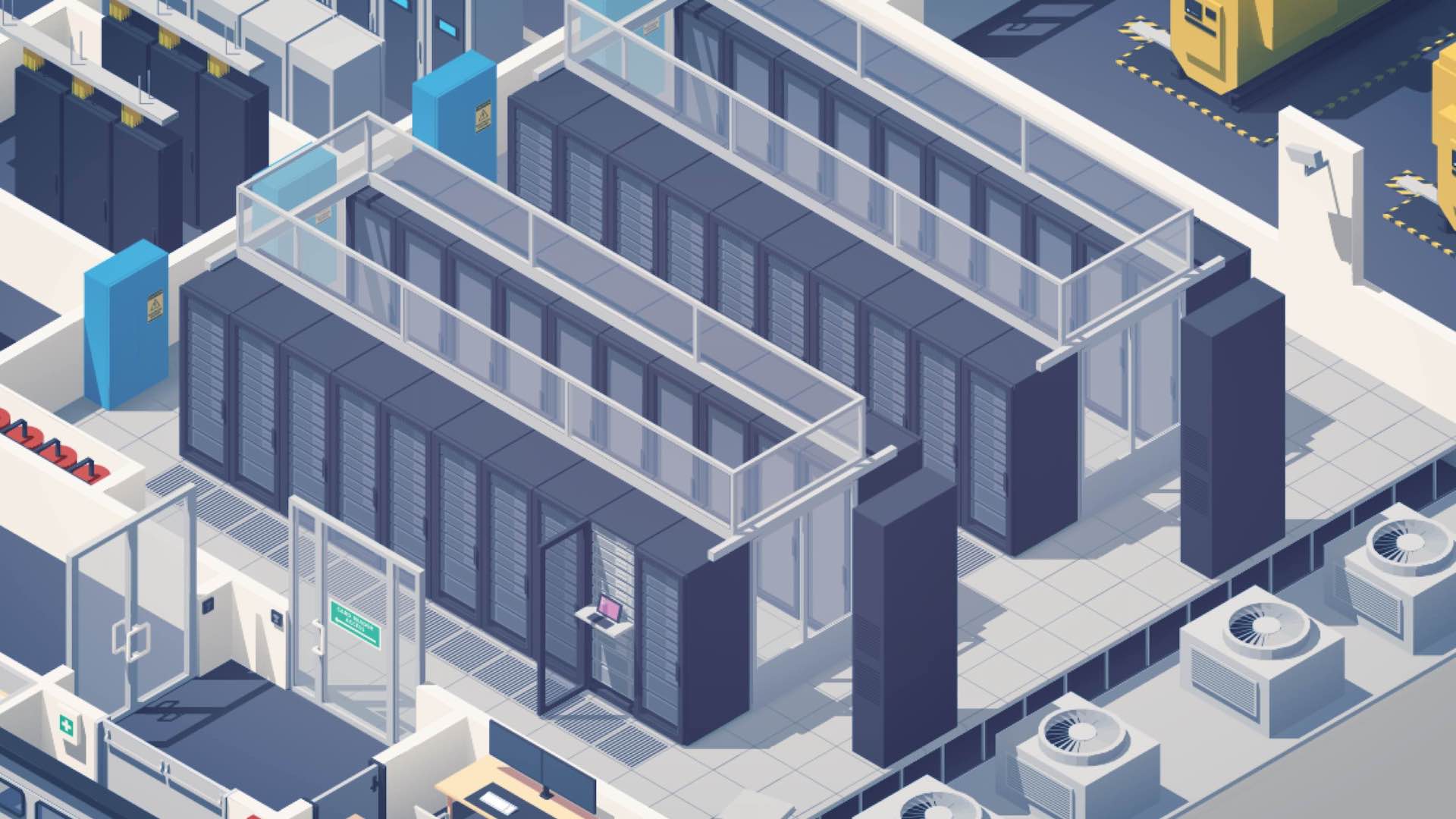By Luke Smith · 2/13/2020

All companies support their business with data center infrastructure.
In the past, most organizations owned and operated their own IT infrastructure. But over the last decade, companies have changed their strategy by leasing this infrastructure instead of owning it themselves.
The data center industry calls this colocation.
This is part two of Data Center Fundamentals, datacenterHawk’s guide to getting up to speed on the data center market. If you’re a new participant in the industry, then this is for you. Instead of analyzing deep market trends, we’ll be covering the basics one step at a time. Be sure to subscribe to our monthly update to know when we release future topics.
If you would like to sign up for our free official Data Center Fundamentals email course, click here.
What is colocation?
Colocation is a strategic path organizations take that includes leasing data center power and space from a data center provider. This often involves sharing space with other companies, called users or tenants.
Colocation looks different for different companies
Colocation leases can range in size from several servers to an entire data center. Data center providers prefer to structure leases in different ways depending on user needs and lease size.
Leases of 50 kilowatts (kW) and less
Smaller footprints are usually All-In leases, where the user pays a set price per month with little variation. The price includes both the rental rate and power cost.
Leases of 50 kW – 5 megawatts (MW)
These leases are often Gross + Electric, where the user pays a set price per kW of data center infrastructure they lease per month, plus the cost of the power they use.
Leases of 5 MW and higher
Larger leases are often Triple Net (NNN), meaning the user pays the provider to use the space, but manages a larger portion of the operations and utilities themselves.
Because power consumption costs are a major part of most leases, the power rate is a large factor in a user’s final bill.
For a 250 kW deployment, a power cost of $0.07 per kilowatt hour (kWh) is more than $1,500 more expensive per month than a $0.06/kWh rate. For a 5 MW deployment, that difference would be more than $25,000 per month.
Data center providers also offer a variety of services tailored to the user’s needs, which has become increasingly more important as users become more dependent on data center operators.
Benefits of colocation vs on-premise data centers
Many companies prefer colocation to owning and operating their own data center for the following reasons:
1. Specialized expertise in data center operations
Data center operation requires a level of expertise that many companies often lack. While it’s possible for companies to develop a staff to fill this role, it’s often faster, less expensive, and more efficient to outsource the requirement. Data center providers are experts in colocation and can provide specialized solutions that best fit their customer’s needs.
2. Increased flexibility
Because IT strategy can change quickly, companies value fluidity with their data center infrastructure. A company’s data center may fit their needs today, but could be inefficient later. Colocating provides flexiblity and helps users avoid getting stuck in a solution that doesn’t fit their needs.
3. Cost savings from provider’s scale
Data center providers are experts in designing and building data centers and often do it in a more cost-efficient manner. Large providers can also leverage their size to lower construction and power costs, and these lower costs are passed on to the user, creating lower operating expenses than owning the data center themselves.
4. Ease of customization
Data center providers offer a variety of services to meet their users’ needs. They can also use their scale to attract third-party service providers, which creates a valuable ecosystem hard for single users to replicate.
5. More fiber connections
A colocation data center often has stronger fiber infrastructure and easier access to cloud service providers, giving users low latency to their cloud environments and the end-customer.
6. Easier path for growth
Growing your data center presence is easier with a data center provider. The relationship between a user and data center provider is typically seen as a long-term partnership. Should a company need a data center in a new market, they can often deploy infrastructure in their provider’s facility in that region. Providers like Digital Realty, Equinix, and CyrusOne report the vast majority of their customers have deployments in more than one of their data centers and many in more than one country.
Colocation data centers are built to high security standards. The data center space is often surrounded by over seven levels of physical security, including perimeter fencing, metal caging, biometric and key card locks, on-site security, and CCTV cameras.
More and more demand is being placed consistently in third party data center facilities. Even large tech companies like Microsoft, Facebook, and Amazon find leasing data center space to be a viable strategy in addition to owning and operating the infrastructure themselves.
The benefits of colocation make it an essential aspect of many companies’ IT strategy.
This was part two of Data Center Fundamentals, datacenterHawk’s guide to getting up to speed on the data center market. Be sure to subscribe to our monthly update to know when we release future topics.
